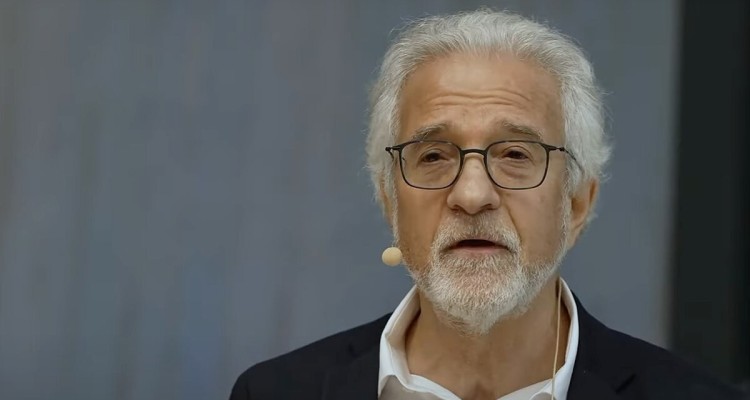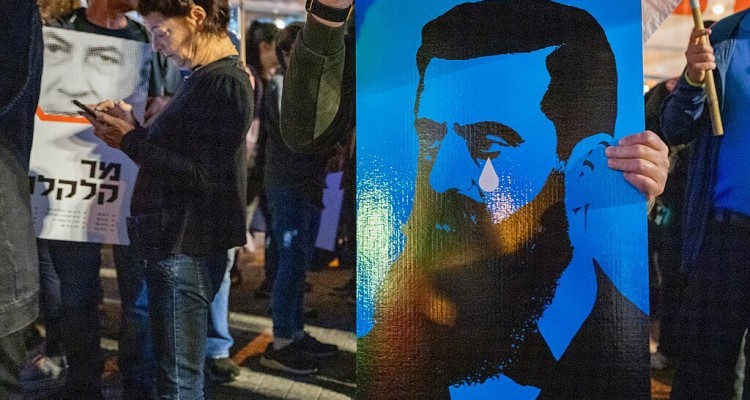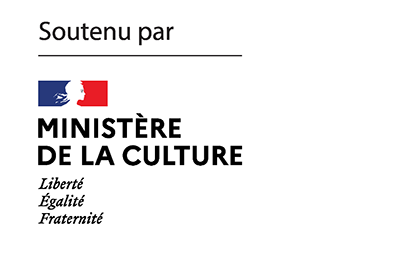200,000 Soviet Jews have settled in Germany since the 1990s. If they migrated to the land of the murderers, it is partly because Germany had a very positive reception policy towards them, but also because Soviet Jewry did not have the same representations of this country as the Jews of Western Europe. Lisa Vapné tells us the story of the complex integration of those who were at first desired, then disappointed, and finally until today are struggling to be recognized by their own community.
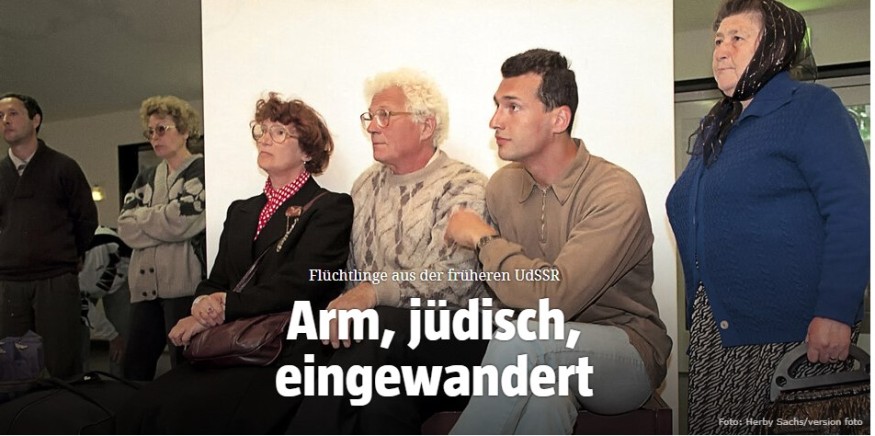
When a tourist visits Berlin nowadays, he can easily see many traces of a Jewish presence in the German capital. He is likely to visit the “Jewish Museum” designed by architect Daniel Libeskind and his steps will lead him, near the Bundestag, to the huge “Memorial to the Murdered Jews of Europe” opened in 2005. It is just as likely that his feet will tread on the cobblestones, the Stolpersteine, on which the names and deportation dates of former Berliners are inscribed, or that his eyes will catch sight of the Star of David over the dome of the synagogue on Oranienburger Strasse. All these stones, symbols, museums, and memorials that stand before the eyes of passers-by recount a history that ended badly between the Jews and Germany, between Germany and its Jews. It is a story where the Jews are present, but belong to the past. On the other hand, in today’s Germany, the Jews of Germany, the alive ones, those who speak Russian, remain mostly invisible.
When World War II ended, the number of Jews still alive on German soil was small: 15,000 German Jews who had survived the extermination policy chose to remain in the country, and another 15,000 who were in camps for displaced persons decided to settle there. The descendants of these two groups, with very different collective histories, are the ones who most often represent the Jews of Germany today – if anything, they are the leaders of Jewish institutions. They are called the “alteingesessene Juden” [long-established Jews], those who have been here for a long time, even though some arrived just after the war.
The aforementioned Jews have been considered as long-established since the beginning of the 1990s, when new arrivals came to the Federal Republic of Germany (FRG): more than 200,000 in thirty years. These newcomers now represent 90% of the Jews in Germany. They come from the Soviet Union and its successor countries, and are concentrated in the Eastern Länder, where they most often represent the entire Jewish population. Although they are not seen as German Jews, they are the Jews of Germany.
What happened to make Russian the language of German Jewish life? Why did these Jews from the Soviet Union arrive in Germany in such large numbers? In other words, how did it start?
The Germany that chose to receive Jews from the Eastern Bloc is not the one might think. It was indeed in the German Democratic Republic (GDR) that this story began. It started when the GDR was a shadow of its former self, before it merged with its neighbor, the FRG. At that time, Egon Krenz, the “last GDR communist”, who still believed it was possible to choose reform rather than break-up, replaced Erich Honecker as General Secretary of the East German Communist Party (SED), and managed to form a national unity government. In East Germany, the setting for upheavals in both politics and civil society, the Jewish question came into play in two ways: through the prism of East Germany’s responsibility for the Shoah and in terms of reception of Soviet Jews threatened at home.
Three months after the fall of the Berlin Wall in November 1989, the GDR wanted to prove to the world in general, and to the Jews in particular, that it had changed. On February 8, 1990, in a letter to the World Jewish Congress, Hans Modrow acknowledged the responsibility of the entire German people for the Nazi past. The GDR, which considered itself the heir to the anti-fascist struggle, accepted, forty years after its creation, that it too bore historical responsibility for the “persecution” of the Jews by the Third Reich. Then, on April 12, 1990, the newly elected East German Parliament issued a “Declaration of the People’s Chamber on German History” relating to the GDR’s responsibility for certain dark pages of its history: the extermination of the Jews, the violence inflicted on the Soviet people during the Second World War, and the involvement of East German troops alongside those of the Warsaw Pact in 1968 in putting down “the Prague Spring”. The GDR, in what was to be the last year of its existence, wanted to gain legitimacy on the international scene and show that a fundamental revolution had taken place.
At the same time, while East German civil society was invited to take part in roundtable discussions, the Jewish Cultural Association of Berlin relayed rumors of pogroms in the Soviet Union, which were also echoed in the press. The Association’s appeal, which was approved by the Central Round Table[1] February 15, 1990 read as follows:
“For weeks we have been hearing about threats of anti-Jewish pogroms in various Soviet cities. Antisemitic and nationalistic forces have organized and are menacing the lives of Jews. This development not only threatens human life; it also calls into question the success of the Perestroika in the Soviet Union. We remember that recently the whole world witnessed the persecution and extermination of Jews by German fascism, so we ask you not to repeat this dishonor of the German past. A Talmudic law says: all laws must be broken if a life can be saved. For this very reason, we demand that the GDR create the conditions for an immediate welcome to Soviet Jews who wish to come to our country, regardless of the existing legal instructions[2]”.
A few months later, on July 11, 1990, the last GDR government, headed by Lothar de Maizière, responded to the requests of the Jewish Cultural Association of Berlin and the Central Round Table, and issued a text in which it granted asylum “to a limited number of foreign Jewish citizens who are threatened with persecution or discrimination[3]” A month later, 800 Soviet Jews, who had arrived on tourist visas, received permanent resident status in the GDR and joined the 100 already present in East Berlin since spring.
While Soviet Jews were arriving in East Berlin by the hundreds, some people in West Germany wanted to follow in their neighbor’s footsteps and have their own government take a similar decision. Without waiting, in Frankfurt am Main, Bayreuth or in the Land of Hesse, solutions were sought to welcome these Soviet Jews: there was no question of remaining idle in the face of the situation of these people who were likely to be victims of antisemitism in the USSR. Yet, in the middle of the summer of 1990, the West German federal government not only advised the West German consulates in the Soviet Union to stop issuing visas to Jews, but urged the GDR consulates to do the same[4] in the face of the excitement among Soviet Jews over the possibility of emigrating[5].
Heinz Galinski, president of the Central Council of Jews in Germany since 1988, expressed to Helmut Kohl his wish that the issuance of visas continue, seeing the arrival of Soviet Jews as the only way to strengthen a battered German Jewish community[6]. An agreement was sealed between the two men. But the law and the legislation on the reception of foreigners will have to come into play.
Soviet Jews enter the Bundestag
On October 3, 1990, the GDR Länder became part of the FRG. The East German legislation on the reception of Soviet Jews was therefore short-lived since it remained in effect during one summer only. Nevertheless, the three months of openness were long enough for Soviet Jews, especially those with ties to the GDR, to seize the opportunity and take a train, bus or plane to East Berlin. Long enough, too, for the West German Left to have the idea of imitating the East.
As of October 3, Soviet Jews who had been in the GDR until then found themselves in a legal no-man’s land, while others were waiting in the USSR to find out whether they could immigrate to the newly reunited Germany. For, whereas the representatives of German Jewish institutions would have liked to have more Jews, the federal government still had to agree to find a legal framework to welcome them. Germany in 1990 did not yet consider itself a country of immigration[7], but one thing seemed to be taken for granted in the debates in the federal Parliament: Germany had to take in Soviet Jews because they were victims of persecution that could not leave anyone indifferent, and moreover, such a policy could only benefit Germany to have more Jews.</footnote>This idea was expressed by several MPs in the parliamentary debates, and unanimously approved.
Let’s go back to October 24, 1990, when Dietrich Wetzel, member of parliament for the Union 90/Green party, proposed the following resolution to Parliament :
“The revolutionary changes that took place in the Soviet Union as a result of Glasnost and Perestroika have not only allowed the expansion of democratic forces, they have also unleashed both nationalistic and antisemitic forces.
As a result, Soviet Jews became the “scapegoats” for the economic, ecological and spiritual decay of the Soviet Union. The dramatic restriction of their way of life and the threat of immediate persecution cannot be denied.
If Soviet Jews wish to flee from these persecutions and despite the war crimes committed against them by the German people, they nevertheless wish to immigrate to Germany, then they are welcome. (…)[8].“
The day after the resolution was passed, on October 25, the situation of Soviet Jews, or more precisely, “the entry of Eastern European Jews”, was placed on the agenda of the Bundestag parliamentary session as a topical issue and discussed by the MPs. The minutes of the plenary session suggest that the discussion was calm, perhaps a little embarrassed. There was no longer any question of stopping giving visas to those concerned. No MP wanted to be the ugly duckling who would publicly oppose the reception of Jews from the USSR. No one dared to say that the migration of Soviet Jews was neither desirable nor conceivable. They all seemed to agree that the issue should be discussed, but without making too much noise, because no one had any interest in seeing shocking formulations on the front page of the newspapers the next day. While the question that remained unanswered concerning the modalities of reception, all agreed to express their emotion about the situation of Soviet Jews and to affirm “the particular responsibility of the Germans towards the Jews”. The historical responsibility, the weight of the past, the special relationship to the Jews were postulated by each of the MPs as self-evident. And all of them expressed their wish to circumscribe the question in the Parliament. It can be assumed that the reason for this was the fear that a law showing preferential treatment for Soviet Jews would be frowned upon in German society as a whole.
Two main arguments emerged in favor of the German government’s refusal to restrict the entry of Soviet Jews. Firstly, it was a question of Germany giving itself a new image. The reception of Jews, explained Dietrich Wetzel, could be a strong political decision of the reunited and reborn FRG to show the world that there was no longer any reason to be afraid of Germany. The bill stated explicitly that the entry of Soviet Jews should “be seen as a reassuring sign for the democratic future of the new German Republic”. Welcoming Soviet Jews, it went on to say, was a sign of “whether and how the new Germany wants to live with its past” and whether it wished to be seen abroad as a state that wanted to remain “Judenrein” [cleansed of Jews]. A more substantial Jewish presence would appear to be a positive indicator for the Federal Republic on the imaginary gauge of democratic normality. It would demonstrate both that Germany had a generous policy of welcoming the Soviet Jewish population and that Soviet Jews now perceived Germany as a country in which it is possible to settle and live in peace.

The second argument was expressed by state secretary in the Interior Ministry. Horst Waffenschmidt, speaking on behalf of the federal government, said it was again addressing the advantages that the FRG could gain from this influx of Soviet Jews. Germany was thinking of accepting these incoming Jews not because of a new migration policy, but because of “the special responsibility of the Germans towards the Jews”, he said. And so, he asserted that Germany could benefit from this migration insofar as:
“The influx of Jews and the strengthening of Jewish communities certainly leads, and I express this as something positive, to a revitalization of the Jewish elements in German culture and cultural life, which played such a great role in the past. I simply recall the many Nobel Prize winners, musicians and writers who have proven the importance of Jewish elements for German science and culture. We must also bear this in mind when today Jews from Eastern Europe seek to emigrate”.
According to Waffenschmidt, Germany would have a vested interest in this immigration, which was not called such, because the Jews of the Soviet Union could, like their co-religionists in pre-1933 Germany, contribute to the country’s influence in the fields of culture and science. In other words, Soviet Jews were fantasized in the mirror of some German Jews of yesteryear as members of the elite of Soviet society who could provide intellectual and cultural nourishment to a Germany impoverished by the departure and extermination of “its” own Jews. Without necessarily being aware of doing so, the officiel reused the image of the “intelligent Jew”[9] inherited from nineteenth-century biological racism. In this regard, Waffenschmidt argued that the country not only harmed Jews, but also itself by depriving itself of the contribution of the latter to culture and society. Moreover, by letting “its” Jews go, Germany offered the United States a significant potential Nobel Prize winners A month before this debate, when immigration was jeopardized by Bonn, one could already read in the newspaper Die Welt these lines written in the same spirit, at the very least pragmatic, signed by Michaël Wolffsohn, a conservative German Jewish historian:
“The number of German Jews is extremely small, the communities are aging, and the professional as well as intellectual potential of Soviet Jews is enormous. Germany and German Jewish communities will subsequently be able to benefit from this, just as the United States after 1933 benefited from the immigration of Jewish intelligence from Germany[10]”.
Once the principle of reception had been accepted, two questions remained unanswered. On the one hand, to welcome the Soviet Jews, yes, but how many and how coulf the flow be limited? On the other hand, what should the legal framework be for this reception?
Not Jewish migrants, contingent refugees
During the debate on October 24, 1990, when Social Democrat MP Peter Glotz had stated that the FRG could not accommodate the “two million Jews”[11] that the Soviet Union had, and that it would not be dishonorable to establish a quota system as existed in the United States, in this case of 40,000 people, the deputies of the Union 90/Green party had retorted: “we once had 600,000!” The 600,000 Jews of the past[12] referred to in October 1990, absolute demographic horizon, was not reached since, in thirty years, fewer than 250,000 Jews arrived in Germany under this admission policy.
Whatever Germany’s historical responsibility towards the Jews, it could not create ex nihilo a new migration category based on religious affiliation in order to provide a framework for this population flow. Amendment 116 of the German Basic Law allowed Germans who had been stripped of their citizenship between 1933 and 1945 to enter Germany. But this did not apply to Jews from the USSR, who had no particular reason to obtain what would have been a migratory privilege. The risk posed by the introduction of a “non-racist, pro-Jewish” migration policy [13] was at the heart of the parliamentary debate. How could this selection of Soviet and then post-Soviet Jews, this discretionary policy of the German state, be successfully camouflaged by law?
Johannes Gerster of the ruling party (CDU) rightly insisted on the constitutional impossibility of granting privileges linked to an individual’s religious affiliation:
“Respect for the German State Constitution and the principle of equality requires that we implement a coherent immigration policy that guarantees the same rights to all persons seeking to settle in Germany. It is essential that we do not forget this. Jews from the Soviet Union are neither ethnic Germans nor asylum seekers; their legal situation is therefore that defined for refugees by the Contingent Law[14].
It became very quickly apparent that the Jews of the USSR wanted to immigrate to Germany for reasons other than political or religious persecution alone[15]. These could have allowed them, on a case-by-case basis, to obtain refugee status under the Geneva Convention. Germany was left with only one possibility, i.e. taking over the pre-existing legislation on contingent refugees [Kontingentflüchtlingsgesetz] that had until then benefited the Vietnamese boat people, and allowing a collective reception of refugees with identity papers as the only means of access..
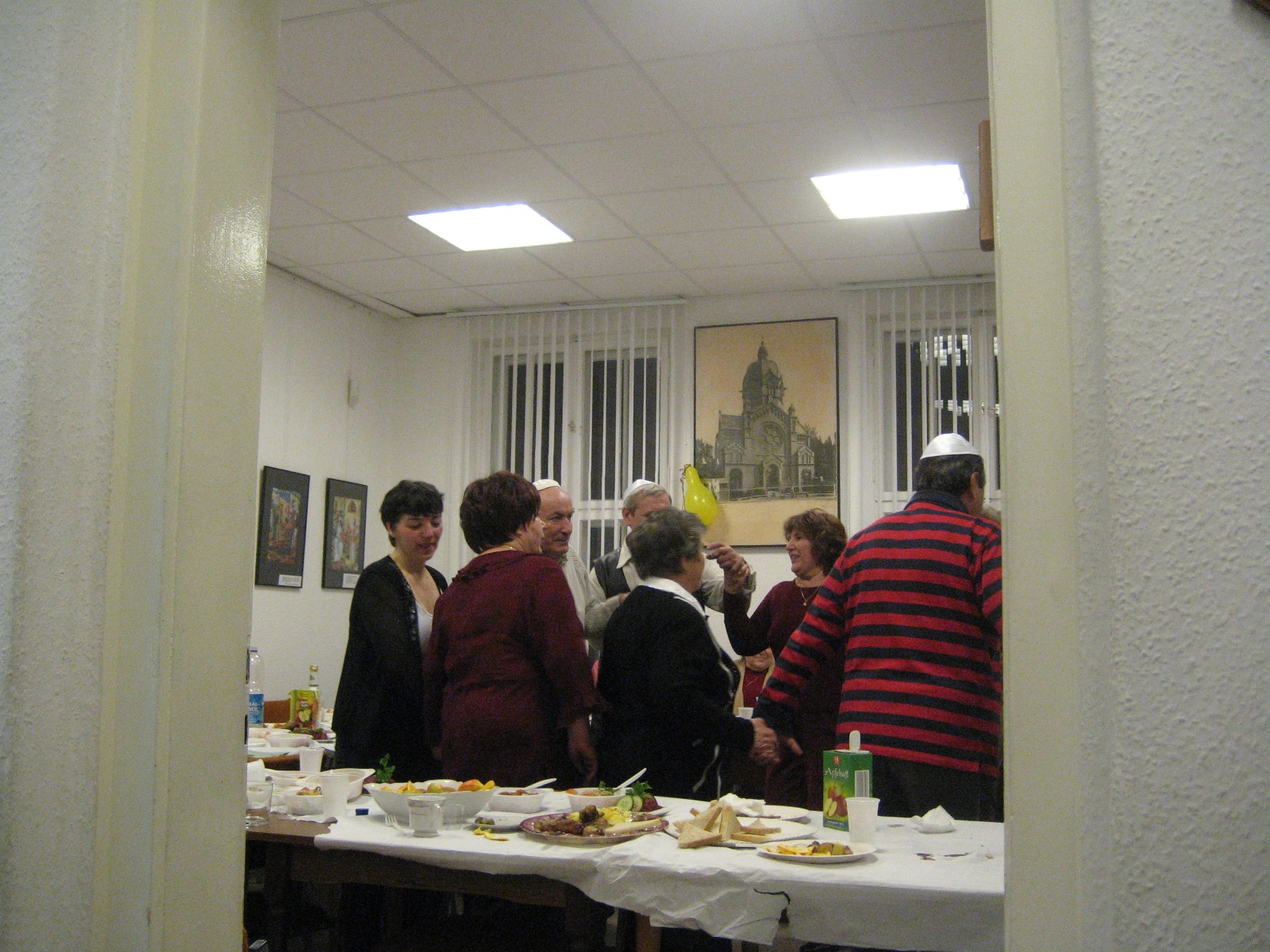
On November 14, 1990, in response to questions raised during parliamentary debates, the federal government officially announced its intention to support the immigration of Soviet Jews:
“The federal government is aware of the atrocities committed by the National Socialist State apparatus against the Jewish people and of Germany’s historical responsibility for these crimes. Meanwhile, many Soviet Jews expressed their desire to emigrate to Germany in order to build a new life here. Let us keep this in mind:
– Well-organized immigration will help to revive Jewish communities that have been severely weakened since the war.
– The strengthening of the Jewish community will make an essential contribution to German cultural and intellectual life [16] ».
Germany thus invited Jews from the USSR to come to its territory, but in practice how did it implement a migration policy that was both religious and ethnic in nature? How did Germany in 1991 identify who was Jewish and who was not? What criteria were used to select Jews from the Soviet Union?
The stakes of Jewish “nationality”
The German State wanted to bring in Jews (in the religious sense of the term, since the “racial” sense was no longer valid) to strengthen its Jewish community. One detail escaped the Germans, who seem to have shown little interest in the history of Jews in the USSR. It is the distinction between the lower case and the upper case of the word (Jew vs. jew), which exists in some languages. [17]. There had been officially no Jews in the USSR since January 23, 1918, when this religious civil status was suppressed. For although in Russian slang, identity papers are referred to as ksiva, a word that derives from the Yiddish transliteration of the Hebrew ketubah and refers to the religious marriage contract, religious documents are no longer in use in the USSR.
Thus, the German consular authorities had only one solution to find out who was Jewish and who was not: to rely on Soviet identity papers which indicated Jewish origin as “nationality”. This nationality constituted a biological inheritance, since from 1938 onwards it was no longer left to the free choice of the person concerned; it had to be attested to by a written document which allowed the ethnic identification of the parents. When obtaining a Soviet passport at the age of sixteen, children of mixed marriages had to choose a “nationality” among those of their parents. After a careful calculation, the least prejudicial “nationality” was chosen – very rarely the Jewish “nationality”. The children of Jewish fathers could also change their family name in order to advance almost incognito in Soviet society. By the end of the 1980s, when Jewish “nationality” became a precious ticket out of the USSR, there was no longer any question of making the Jewish origin disappear – on the contrary, it became essential to produce any documents that could prove what had previously been concealed.
It was therefore possible for Germany, thanks to Soviet identity papers, to select Jews to allow them to immigrate. But if Germany wanted Jews to settle in the country, it was ultimately to make German Jewish life more perennial. However, since the USSR was not a territory conducive to the development of Judaism for the masses, only a few individuals maintained a religious practice. And among those who wished to leave the Soviet Union at the beginning of the 1990s to go to Germany – even more so than to Israel – the link with the Jewish religion was often tenuous if not completely absent.
Fake Jews? The questioning of Jewish identity
Germany welcomed to its territory a Jewish migration that was not for that matter a migration of jews, as defined hereabove, or even of Jews, because each migrant, even if validated by the consular authorities, had the right to arrive with his or her family members, who were not necessarily of the same status [18]. In other words, the categories used by the German State in order to select “contingent refugees” and those of the Jewish religion did not overlap. Of all the people who arrived in Germany “by the Jewish route”, as they called it, only those whose mothers were Jewish – according to the principle of matrilineal transmission of Judaism – could officially join the German Jewish communities. And it was precisely these communities that provided part of the material welcome for the new arrivals. The others, those who had a Jewish father, or who came with their husband or wife of Jewish origin, were not accepted by the Jewish communities, which resulted in a kind of migratory lacuna that the German State sought to correct.
In the German media, this discrepancy between the imaginary and the real Jewish migrants resulted in more and more frequently raising the question throughout the 1990s of the authenticity of the Jewish identity of those people, as normatively perceived by the host society. Such a questioning (the thought that they might be impostors, since were are not exactly what one hoped they would be) led to the formulation of new, more restrictive conditions of reception, from 2005 onwards, the tacit aim of which was to receive only “real Jews,” that is to say, those born of Jewish mothers.
But even before that, in the 1990s, the requirements for migrants became more precise. From 1995 onwards, in order to apply for Jewish emigration, it was necessary to have at least one Jewish parent and to be able to prove it with identity papers. In mathematical terms, which are not very conducive to questions related to identity, that year saw a shift from a criterion of at least one quarter Jewishness to that of one half. This change was symbolic in that, from this date on, the West German migration policy towards Jews became stricter than that of Israel, since the Jewish State’s “Law of Return” applies to individuals who can prove that at least one of their grandparents is ethnically Jewish.
Then, from March 25, 1997, the conditions for the selection and reception of Jews from the successor countries of the Soviet Union became even more explicit[19] and restrictive. In reaction, it seems, to the arrival of “fake Jews” (i.e. individuals with fake Jewish papers) only original stamped documents from the Soviet period were deemed acceptable. In addition to the candidate’s ethnonational affiliation in the strict sense of the term, it was required that the candidate did not profess any religion other than Judaism.
The good, the bad and the fake Jew
Three stereotypes emerged from the German public debates in the mid-1990s: the good Jew, the bad Jew and the fake Jew. The first, the good Jew, is well educated and has a fine job. In addition to this professional achievement, he remains connected to the Jewish world of the past, perceived as authentic. He was part of the intelligentsia in the post-Soviet space and therefore could potentially contribute to German cultural and intellectual life. It is assumed that both his parents are Jewish and that his family was more closely than remotely affected by the Shoah. Immigration policy was implemented to accommodate this typical Jew. The second stereotype exists in opposition to the first: unlike the latter, the bad Jew is not an intelligent (in the Russian sense of the word, i.e. a member of the intelligentsia); he works in the manufacturing sector; he and his family have a Jewish father or mother, but his sense of belonging to this group is mostly cemented by Soviet antisemitism, and there is little to really distinguish him from the rest of the non-Jewish population. The third stereotype is that of the “fake Jew” who bought himself suitable identity papers at a marketplace or elsewhere in order to immigrate to Germany. It is not known how many of them there were, but the doubt about the authenticity of identity papers and of identity itself hangs over all those who immigrated to Germany in the course of this Fälschungsdebatte, the debate about falsification fueled by the press in the 1990s. Here is an example taken from Der Spiegel in 1999:
“Almost 100,000 people have arrived since the beginning of the 1990s, and every day there are more questions about whether they were the right people [die Richtigen] and whether they are still the right people today. The market for false documents is flourishing all over the Urals, and for five-digit sums of money, citizens of the former Soviet Union with no religious affiliation [konfessionslose Ex-Sowjetbürger] are transformed into descendants of Jewish families: all that is needed is a birth certificate or certificate of origin [Geburts oder Abstammungsurkunde] attesting that at least one of the applicant’s parents is of Jewish origin. (…) This makes the work of the German administration more difficult on the rare occasions when it intervenes. At this very moment, the Schwerin public prosecutor’s office is investigating the former president of the Union of Jewish Communities in Mecklenburg-Western Pomerania, Semjon Bronfman. On trial for handling stolen passports, he is suspected of having procured false certificates of Jewish origin to Armenians for a sum ranging from 5,000 to 10,000 USD[20]”.

And in 2004, the tone in the international and English-speaking version of Der Spiegel clearly differs from the one that could be found fourteen years earlier in 1990, in which the immigration of “Jews” was encouraged; the relevant article that comments on the possibility of even stronger regulation of the immigration of Russian-speaking Jews[21].
Thus, fifteen years after the beginning of the emigration of Soviet Jews to Germany, the “lesson of history” is not that projecting hopes and fantasies of identity onto a group is not very relevant. The conditions under which the Soviet Jews were welcomed have been forgotten: there is no longer any question of talking about the persecutions that the Jews underwent in the USSR or about antisemitism. What matters is the perpetuation of German Jewry since “maintaining the viability of Jewish communities in Germany”[22] is the mission assigned to these Jews. Yet, not very religious and not always sufficiently Jewish, they have apparently failed. So, the decision at the highest level of the German State seems to have been to select them more rigorously. In 1998, six years before the reform of the immigration criteria came into force, the sociologist Jeroen Domernik wrote with great clairvoyance: “However, I doubt very much that it is possible to officially put an end to this policy. This would only be feasible if the Jewish Community would declare that it does not consider these newcomers to be real Jews»[23].
The new 2005 Law
While from 1991 to 2004, the law on “contingent refugees” made this reception possible, starting January 1, 2005, Germany, which now recognizes that it is a country of immigration, created a new migratory category, that of “Jewish migrants” (Judische Zuwanderer). Once again, no one dared to repeal this welcome. Since then, these migrants are no longer admitted as part of a humanitarian policy, but because of a “special political interest”. Thus, they are no longer officially categorized as refugees fleeing antisemitism, but as migrants of the Jewish faith who are to strengthen the Jewish community in Germany. The Jewish community in Germany has succeeded in avoiding an end to this migratory flow, while imposing a better selection process of the candidates for emigration.
The nature of the restrictions on immigration was to be determined in fits and starts by proposals and counter-proposals in the course of negotiations between the Federal State, the Länder and the Central Council of Jews in Germany. One idea that has not disappeared over the years is that expressed by Charlotte Knobloch, then vice-president of the Central Council of Jews in Germany, who in 2005 expressed her satisfaction that immigration would continue because, she said, “… we want the number of Jews in Germany to reach the level it had before the Second World War. ” And for this to happen, several hundred thousand people must still settle here. In 2005, it was decided, among other things, that in order to be able to immigrate to Germany, each candidate has to be accepted by a Jewish community into its midst. The addition of this condition has the effect of excluding people whose fathers are Jewish from the West German immigration policy, since the Orthodox or Progressive Jewish communities do not consider them to be Jewish. The evolution of the migration policy regarding post-Soviet Jews suggests that the German State has appropriated the religious categories of Judaism so as to receive Jews in the ethnic sense, who are also Jews in the sense of the religious definition applied in Germany.
Today, the Jews of Germany are comprised ninety percent of Jews from the USSR whose reception was allowed because it became difficult to reject them and because they were considered as “brothers of faith” [Glaubensbrüder] of the dead Jews: they were given a symbolic role in the sense that they were perceived as having the ability to renew Jewish life in Germany forty-five years after the Shoah. They were implicitly asked, very quickly, to shed their history and embrace another one, to take on the garb of the departed or dead Jews of Germany. One did not see that, in their own way, they and their children after them, even though they were bound to fail in the task assigned to them, made it possible to open synagogues and communal places in cities where, in 1991, this still seemed unthinkable, and to enrich Jewish life in Germany with their differences.
Lisa Vapné
Translated from French by Bernard Dov Belz
Notes
| 1 | The Central Round Table of the GDR met for the first time on December 7, 1989 in Berlin. It thought of itself as a transitional body waiting for a democratic executive power in the GDR. For this reason, the end of its existence was, from its inception, set for March 18, 1990, the scheduled date of the first free GDR parliamentary elections. |
| 2 | Helmut Herles and Ewald Rose, Vom Runden Tisch zum Parlament [From the Round Table to Parliament], Bouvier Verlag, Bonn, 1990, p. 161 |
| 3 | Ausländerbeaufragte des Senats, Bericht zur Integration und Ausländerpolitik, Senat von Berlin, Berlin, 1994, p. 42, quoted in Jeroen Domernik, Going West. Soviet Jewish immigrants in Berlin since 1990, Avebury, 1997, p. 53. |
| 4 | Ibid, p. 131. |
| 5 | According to Pavel Polian, this decision by Helmut Kohl was prompted by the fact that, by August 1990, more than ten thousand applications had already been submitted to the East German consulate in Kiev. See Pavel Polian, Očerki evrejskoj èmigracii iz byvšego SSSR v nynešnûû Germaniû [Essay on the History of the Emigration of Soviet Jews to Germany] |
| 6 | Pavel Polian refers to remarks made by Ignatz Bubis, Heinz Galinski’s successor as president of the Central Council of Jews in Germany, in his article quoted above. |
| 7 | ”Deutschland ist kein Eiwanderungsland.” This phrase, taken from the 1965 Law on the Right of Residence for Foreigners, was included in the program of the CDU/CSU and FDP coalition in 1982. |
| 8 | ”Antrag des Abgeordneten Wetzel und der Fraktion Die Grünen/Bündnis 90. Eiwanderung sowjetischer Juden in die Bundesrepublik Deutschland,” 11/8212. 24 October 1990, 1. See http://dip21.bundestag.de/dip21/btd/11/082/1108212.pdf, Web page accessed on November 8, 2022. |
| 9 | Sander L. Gilman, Smart Jews. The Construction of the image of Jewish superior intelligence, University of Nebraska Press, 1996. |
| 10 | Michael Wolffsohn, “Bonn und die Juden” [Bonn and the Jews], Die Welt, 15 September 1990. |
| 11 | The last Soviet population census of 1989 counted as Jews 1.4 million Soviet citizens. These people were categorized as such by their “nationality” and corresponded to the population whose two parents were of Jewish nationality. |
| 12 | According to the June 1933 census in Hitler’s Germany, there were 505,000 Jews at the time out of a total population of more than 65 million. From findings published in Wirtschaft und Statistik, quoted by René Crozet in “Recensement de la population en Allemagne du 16 juin 1933,” Annales de Géographie, 1934, t. 43, no. 244, p. 442. |
| 13 | Paul Harris, “Jewish Immigration to Reunified Germany or the Rebirth of a Community”, translated from English by Maïa Grynberg, Yod, n°6, 1999, p. 45. |
| 14 | Gerster, CDU. Beratung des Autrags des Abgeordnten Wetzel und der Fraktion die Grünen. Deutscher Bundestag. Plenar-Protokoll, 31 October 1990, 18741-18742. Quoted in French in Paul Harris, “L’immigration juive vers l’Allemagne réunifiée ou la renaissance d’une communauté,” op. cit., p. 45. |
| 15 | The reasons for emigration were always multiple (antisemitism, economic hardships, family reunification…) and it is virtually impossible to consider that one would have primacy over the other. See Lisa Vapné, “Les Remplaçants. Migration juive de l’ex-Union soviétique en Allemagne 1990-2010” [The replacements. Jewish Migration from the Former Soviet Union to Germany 1990-2010], thesis defended at Sciences Po Paris, 2013, pp. 342-369. |
| 16 | Antwort der Bundesregierung. Bundestags-Drucksache 11/ 8439, 14 November 1990. Quoted in French in Paul Harris, “L’immigration juive vers l’Allemagne réunifiée ou la renaissance d’une communauté” [Jewish immigration to reunified Germany or the rebirth of a community] |
| 17 | The Russian language distinguishes iudeï (Jew) from evreï (Jew), but in German (as with English) one speaks indifferently of Jude to designate a jew (i.e. a follower of the Jewish faith) or a Jew (i.e. a member of the Jewish people. |
| 18 | The question of fictitious marriages would also be the object of attention when narrowing the immigration criteria. |
| 19 | Teilrunderlass zur Zuwanderung von Juden aus dem Gebiet der ehemaligen Sowjetunion Az: 514-516-20/7 des Auswärtigen Amts vom 25. 03.1997 [Partial circular directive on the immigration of Jews from the territory of the former Soviet Union Az: 514-516-20/7 of the ministry of Foreign Affairs]. |
| 20 | Florian Gless and Georg Mascolo, “Sehr schwieriges Ermittlungsfeld” [A Very Difficult Field of Investigation], Der Spiegel, No. 13, 29 March 1999, https://www.spiegel.de/politik/sehr-schwieriges-ermittlungsfeld-a-8598acd6-0002-0001-0000-000010630150 |
| 21 | ”Most are coming from the lower socio-economic rungs of the former Soviet Union, are collecting welfare and are getting lost in the margins. […] The vast majority of the Jews coming from the former Soviet Union have difficulty finding jobs and often live on social welfare. In Berlin, an estimated 80 percent of the Jewish community – the majority of them new arrivals from the East – receives state help, the Berliner Zeitung reported. The Eastern Jews also frequently have very little connection to their Jewish heritage and only go to the Central Council to get help finding work and apartments, but not to join, critics have noted.” Scott Lamb, “Jews in Germany: Stopping the Flood from the East,” Spiegel Online International, December 22, 2004. |
| 22 | The expression is taken from the report of the Independent Commission on Immigration, “Zuwanderung gestalten, Integration fördern” Bericht der Unabhängigen Kommission “Zuwanderung” [Controlling Immigration, Encouraging Integration], Berlin, 2001, pp. 162-165 |
| 23 | Jeroen Domernik, « Implementing an open-door policy: Soviet Jewish immigrants in Germany », in Anita Böcker, Kees Groenendijk, Tetty Havinga et alii (dir.), Regulation of migration: International experience, Amsterdam, Het Spinhuis, 1998, p. 248. |

